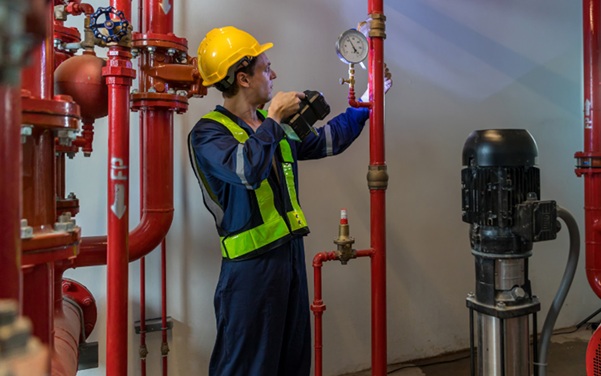Fire protection engineering begins with a thorough assessment of fire risks in a building. Fire protection engineers evaluate potential hazards such as combustible materials, electrical systems, and ventilation designs. Identifying risk factors early allows engineers to implement targeted safety measures that minimise the likelihood of fire outbreaks. Regular risk assessments ensure protection strategies remain effective as building usage and environmental factors change.
Designing Effective Fire Suppression Systems
A well-designed fire suppression system is essential for controlling fire incidents before they escalate. Fire protection engineers develop sprinkler systems, gaseous suppression systems, and water mist solutions to suit various building types. They ensure that suppression mechanisms are positioned correctly and function efficiently. These systems limit fire damage and provide occupants with enough time to evacuate safely.
Implementing Fire Detection and Alarm Systems
Early detection is critical in preventing fire disasters. Fire protection engineers design alarm systems that detect smoke, heat, or gas leaks before a fire spreads. Strategically placed smoke detectors and alarm systems provide timely warnings, allowing occupants to respond quickly. Engineers also ensure systems are integrated with emergency response protocols, improving reaction times in critical situations.
Enhancing Structural Fire Resistance
Building materials and design influence fire resistance. Fire protection engineers specify fire-resistant materials for walls, floors, and ceilings to prevent the rapid spread of flames. Fire doors and compartmentalisation techniques further contain fire within specific areas, reducing structural damage and providing safe escape routes. Enhancing fire resistance in construction supports long-term building safety.
Developing Emergency Evacuation Plans
A well-structured evacuation plan is essential for minimising casualties in fire emergencies. Fire protection engineers design exit routes, emergency lighting systems, and signage to guide occupants to safety. They consider factors such as building layout, occupancy levels, and accessibility requirements to create evacuation plans that accommodate various scenarios. Regular evacuation drills reinforce preparedness and improve response times.
Ensuring Compliance with Fire Safety Regulations
Fire protection engineering involves strict adherence to fire safety regulations. Fire protection engineers ensure that buildings meet national and international fire codes, reducing legal and financial risks for property owners. They conduct regular inspections and update safety measures in line with evolving regulations. Compliance with fire safety laws contributes to overall building resilience and risk management.
Managing Fire Safety in High-Risk Environments
Certain environments, such as industrial facilities and high-rise buildings, require specialised fire protection strategies. Fire protection engineers assess hazardous areas and implement additional fire prevention measures. They design ventilation systems to control smoke movement, install explosion-proof equipment, and apply fire-resistant coatings to critical structures. Tailored solutions for high-risk environments enhance workplace and residential safety.
Learn More: Well-Balanced Solution for Wind-Driven Rain and Fire Safety for Escape Corridors
Conducting Fire Safety Audits and Inspections
Routine inspections help maintain the effectiveness of fire safety measures. Fire protection engineers conduct detailed audits to identify weaknesses in existing fire protection systems. They review alarm functionality, assess suppression system performance, and ensure emergency exits remain unobstructed. Regular audits enhance preparedness and allow for timely improvements in fire safety infrastructure.
Integrating Fire Protection with Smart Technologies
Modern fire protection engineering incorporates smart technologies to improve response times and efficiency. Automated fire detection systems use sensors and data analysis to detect hazards before they escalate. Remote monitoring systems enable real-time tracking of fire protection equipment performance. By integrating smart technologies, engineers enhance fire prevention efforts and optimise building safety management.
The Future of Fire Protection Engineering
As urban development and building complexity increase, fire protection engineering continues to evolve. Engineers are developing more sustainable fire prevention methods, including environmentally friendly suppression agents and energy-efficient alarm systems. Innovations in material science are also contributing to improved fire resistance in construction. The future of fire protection engineering focuses on advancing safety solutions that reduce fire risks while maintaining environmental responsibility.
For more information about fire engineering solutions, contact SHEVS IFT Consultants today.
